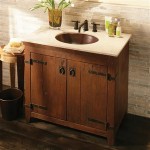How To Remove a Bathroom Ceiling Exhaust Fan Cover With Light
Removing the cover of a bathroom ceiling exhaust fan with a light is a routine maintenance task necessary for cleaning, bulb replacement, and even fan motor repairs. While appearing intimidating at first, the process is generally straightforward and achievable with minimal tools. This article provides a detailed, step-by-step guide on how to safely and effectively remove various types of exhaust fan covers commonly found in bathrooms.
Before initiating any work on electrical appliances, safety should be the paramount concern. Disconnecting the power supply to the exhaust fan is non-negotiable. Locate the circuit breaker that controls the bathroom's electrical circuit and switch it to the 'OFF' position. To confirm the power is indeed off, attempt to switch on the exhaust fan. If the fan does not operate, proceed with the cover removal process. If unsure about identifying the correct breaker or verifying the power cut-off, seeking assistance from a qualified electrician is advisable.
Identifying the Type of Exhaust Fan Cover
Bathroom exhaust fan covers come in several designs, each with its own removal mechanism. Identifying the type of cover is crucial for a smooth and damage-free removal process. Common types encountered include spring-mounted covers, twist-and-lock covers, and screw-mounted covers. Carefully examine the cover for any visible screws, springs, or locking mechanisms. A visual inspection, perhaps aided by a flashlight, will reveal the method of attachment.
Spring-mounted covers are among the most prevalent. These covers are held in place by two wire springs that are compressed when the cover is installed. Twist-and-lock covers, as the name suggests, rely on a rotational mechanism to secure them to the fan housing. Screw-mounted covers are less common but are secured with screws, typically located on the sides or bottom of the cover.
Once the type of cover is identified, the appropriate removal technique can be applied. Attempting to force a cover open without understanding its mechanism can damage the cover, the fan housing, or both. Damage can include cracked plastic, broken mounting tabs, or even damage to the fan motor housing itself.
Removing Spring-Mounted Exhaust Fan Covers
Spring-mounted covers are typically the easiest to remove. The process involves gently pulling down on the cover to expose the wire springs. These springs are usually located on either side of the cover, tucked into slots within the fan housing. Once exposed, the springs need to be carefully detached. This can be achieved by pinching the two ends of each spring together and disengaging them from their respective slots.
A stepladder may be necessary to safely reach the exhaust fan. Ensure the ladder is placed on a stable and level surface. When pulling down on the cover, exert even pressure to avoid bending or breaking the cover. If the cover seems stuck, double-check the location of the springs to ensure they are not obstructed. Avoid applying excessive force, as this could damage the cover or its mounting points.
After pinching the springs and releasing them from the slots, the cover should detach easily. Some covers might have a safety chain or wire connecting them to the fan housing. If present, detach this chain or wire before completely removing the cover. This prevents the cover from falling and potentially causing damage or injury.
With the cover removed, the light bulb (if present) is now accessible. If the intention is to replace the bulb, ensure a replacement bulb of the correct wattage and type is available. Before handling the old bulb, allow it to cool down completely to avoid burns. Dispose of the old bulb responsibly, adhering to local regulations regarding bulb disposal.
Removing Twist-and-Lock Exhaust Fan Covers
Twist-and-lock covers require a rotational movement to detach them from the fan housing. Typically, there are small tabs or slots on the cover that align with corresponding features on the housing. To remove this type of cover, gently push upward on the cover while simultaneously rotating it counterclockwise. The amount of rotation required is usually minimal, often just a quarter or half turn.
Similar to spring-mounted covers, a stepladder will likely be needed. Ensure stable footing before attempting to rotate the cover. If the cover does not turn easily, avoid forcing it. Instead, carefully inspect the cover and housing for any obstructions or locking mechanisms that might be preventing rotation. Some twist-and-lock covers may have a small release button or lever that needs to be activated before the cover can be rotated.
Once the cover is rotated to the unlocked position, it should detach from the housing. Gently pull the cover down, being mindful of any connecting wires for the light fixture. Disconnect these wires carefully, noting their original positions for reconnection during reinstallation. Taking a photograph of the wiring configuration before disconnecting can be beneficial.
Inspect the removed cover for any damage to the locking tabs or slots. If damage is present, the cover may need to be replaced to ensure a secure and proper fit. Clean the cover with a mild detergent and water to remove any accumulated dust or grime. Allow the cover to dry completely before reinstalling it.
Removing Screw-Mounted Exhaust Fan Covers
Screw-mounted exhaust fan covers are secured to the fan housing using screws. The location of these screws can vary depending on the model of the fan. They are typically found on the sides or bottom of the cover, either exposed or hidden behind small covers or caps.
To remove this type of cover, first locate all the screws. Use a screwdriver that matches the type of screw head (e.g., Phillips head or flat head). Carefully unscrew each screw, taking care not to strip the screw heads. It is advisable to use a magnetic screwdriver to prevent the screws from falling into the fan housing.
After all the screws have been removed, the cover should detach easily from the housing. As with other types of covers, be mindful of any connecting wires for the light fixture. Disconnect these wires carefully, noting their original positions. Again, taking a photograph of the wiring is a sound practice.
Inspect the screws for any signs of corrosion or damage. If necessary, replace them with new screws of the same size and type. Clean the cover thoroughly and allow it to dry before reinstallation. When reinstalling the cover, ensure all the screws are tightened securely, but avoid over-tightening, which could damage the cover or the fan housing.
Cleaning and Maintenance After Cover Removal
Removing the cover provides an opportunity to clean the exhaust fan and its components. Over time, dust, lint, and other debris can accumulate inside the fan, reducing its efficiency and potentially posing a fire hazard. Using a vacuum cleaner with a brush attachment, carefully remove any accumulated debris from the fan blades, motor housing, and surrounding areas. Be gentle to avoid damaging the fan blades or other delicate components.
In addition to vacuuming, wiping down the interior of the fan housing with a damp cloth can help remove stubborn dirt and grime. Ensure the cloth is not dripping wet to prevent water from entering the motor or electrical components. Allow all components to dry completely before reinstalling the cover.
Regular cleaning of the exhaust fan can significantly extend its lifespan and improve its performance. It is recommended to clean the fan at least once or twice a year, depending on usage and environmental conditions. In bathrooms with high humidity levels or frequent use, more frequent cleaning may be necessary.
If the exhaust fan is making unusual noises or is not functioning properly, the cover removal process also allows for inspection of the motor and other internal components. However, attempting to repair or replace the motor or other electrical components should only be undertaken by individuals with the necessary skills and experience. If unsure, seeking assistance from a qualified electrician is strongly advised.

Remove Install A Bathroom Fan Grille In 1 Min

How To Clean Replace Light Broan Model 678 Exhaust Fan

How To Clean Replace Light Broan Model 678 Exhaust Fan

Update An Existing Bathroom Exhaust Fan Cover Remodelaholic

Update An Existing Bathroom Exhaust Fan Cover Remodelaholic

Bathroom Exhaust Fan S Cover Will Not Hold Into Place Doityourself Com Community Forums

Panasonic Whisperlight Bathroom Fan How To Remove Lightbulb

How To Remove The Light Cover On A Bathroom Exhaust Fan

Can T Get The Grill Off Nutone Fan Light Doityourself Com Community Forums

Bathroom Exhaust Fan Lint Is A Fire Hazard Mini Mops House Cleaning
Related Posts







